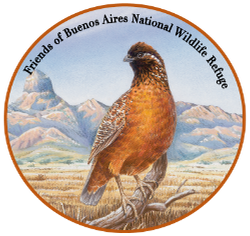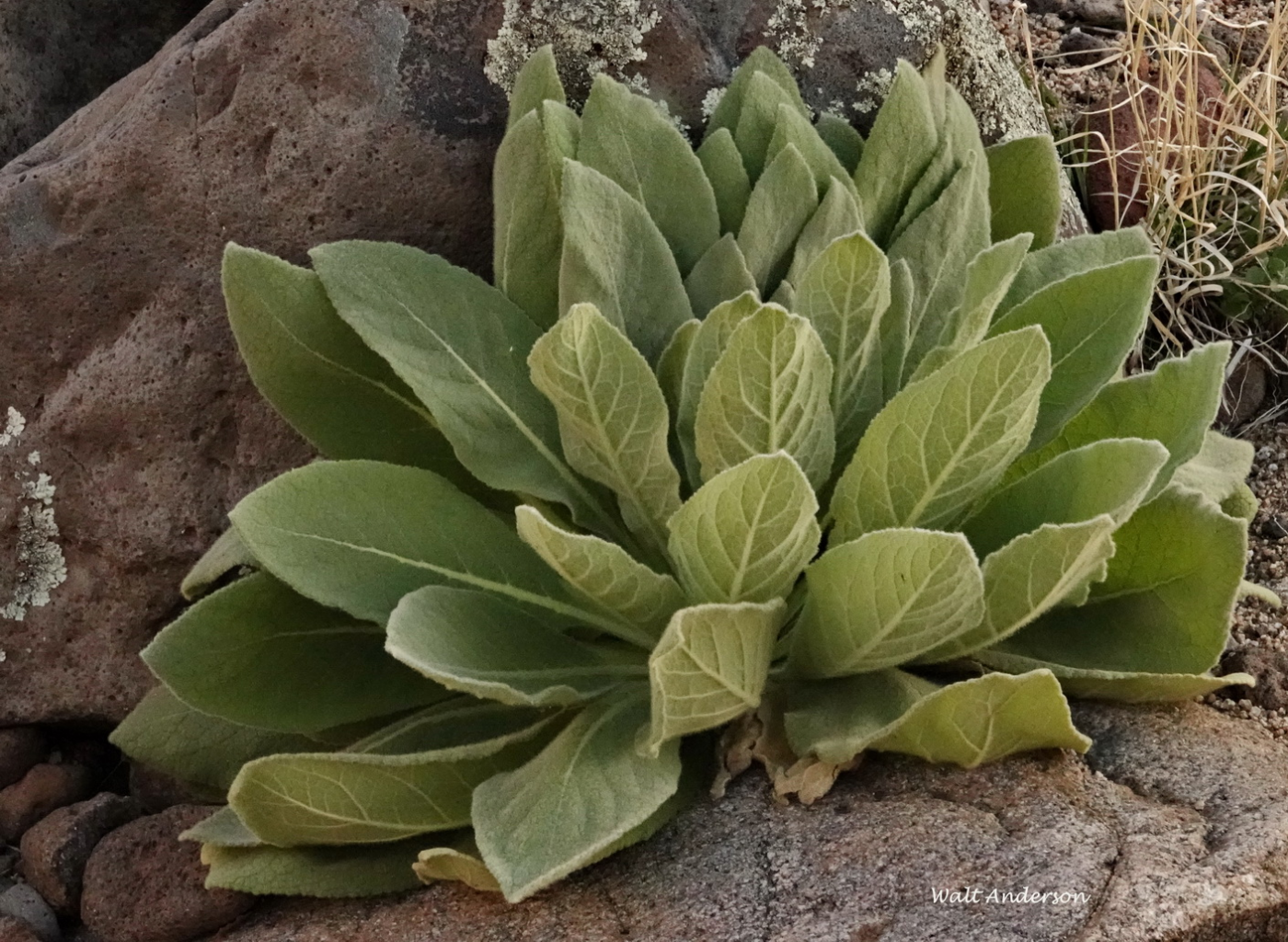
Mullein
by Walt Anderson
I’ve been mullein over just how to tell the story of a plant that brings out mixed feelings in people. Mulleins are not native to the United States, but the woolly one, at least, is visually familiar to many people who may not know its back story. Why don’t we take a closer look?

As a biennial (definitely not a millennial!), Woolly Mullein produces a robust rosette of furry leaves in its first year, then a tall stalk that flowers in the second, after which it dies. Mullein is found in all 50 states, but it’s a carpetbagger, having been brought over with the early European settlers for two main reasons: (1) it has medicinal properties, so it was planted in herbal gardens, along with parsley, sage, rosemary, and thyme (I wonder why Simon and Garfunkel didn’t mention mullein!) and (2) it contains natural rotenone and coumarin, so its seeds were crushed and used to stupefy fish (more stupefied than usual) so they would float to the surface to be scooped up. Originally from Asia, mullein was introduced into England, as well, where it had a variety of names, including, ironically, American Felt Plant. Peasants often used the soft leaves as insoles in their thin boots, which led to the name Feltwort. “Mullein” apparently is derived from the Latin word, “mollis,” which means soft.
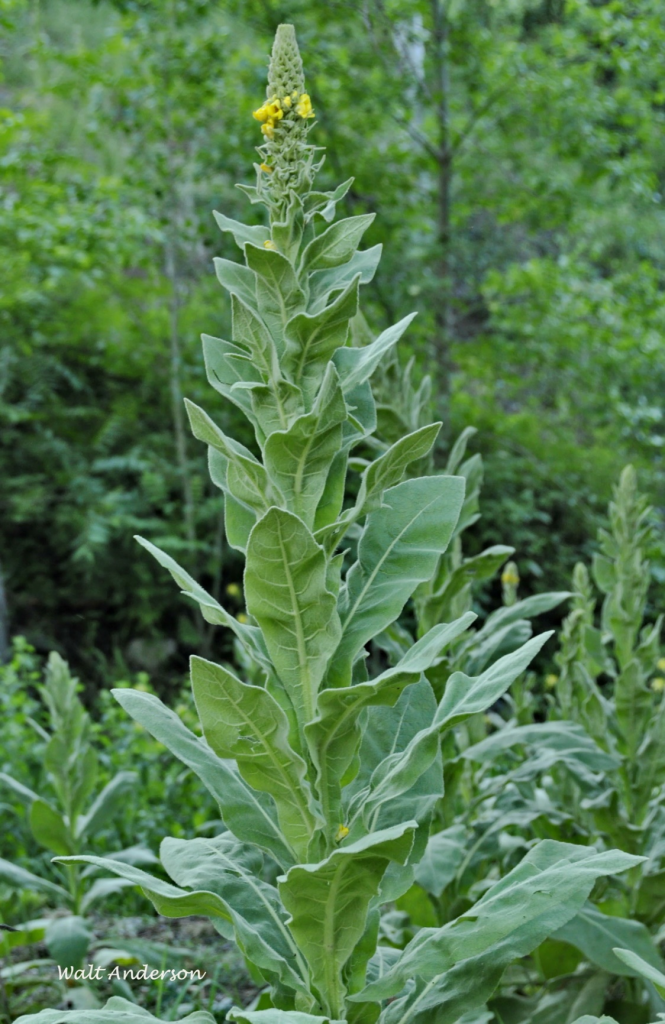
In its second year, mullein bolts from its basal rosette to shoot up to 3-6 feet (taller plants get more pollinator visits and set more seed). The leaves are shaped to funnel rainwater to the base. Woolly leaves were used by the ancient Greeks as lamp wicks, and Romans went even further, using the dried stalks, dipped in tallow, as long-burning torches. Other common names in early America were Miner’s Candlestick and Torchplant.

Some states list this species as “invasive” and urge people to pull it or spray it with Roundup (urged on by chemical-company propaganda). Others decry this othering, this phytoxenophobia (I just created this compound word, but it fits!). Mullein doesn’t invade undisturbed vegetation; it is an opportunistic pioneer in degraded soils. Fire, grazing, heavy equipment, off-road vehicular use, and the like create the disturbed ground that it colonizes. It can stabilize those altered soils, much like a scab stabilizes a wound until healing occurs. It provides food and cover for many creatures, from bees to elk, and it drops out of the community when native plants re-establish. It’s better to think of this as a human commensal, thriving where we have upset the original plant community. Disturbing thoughts.
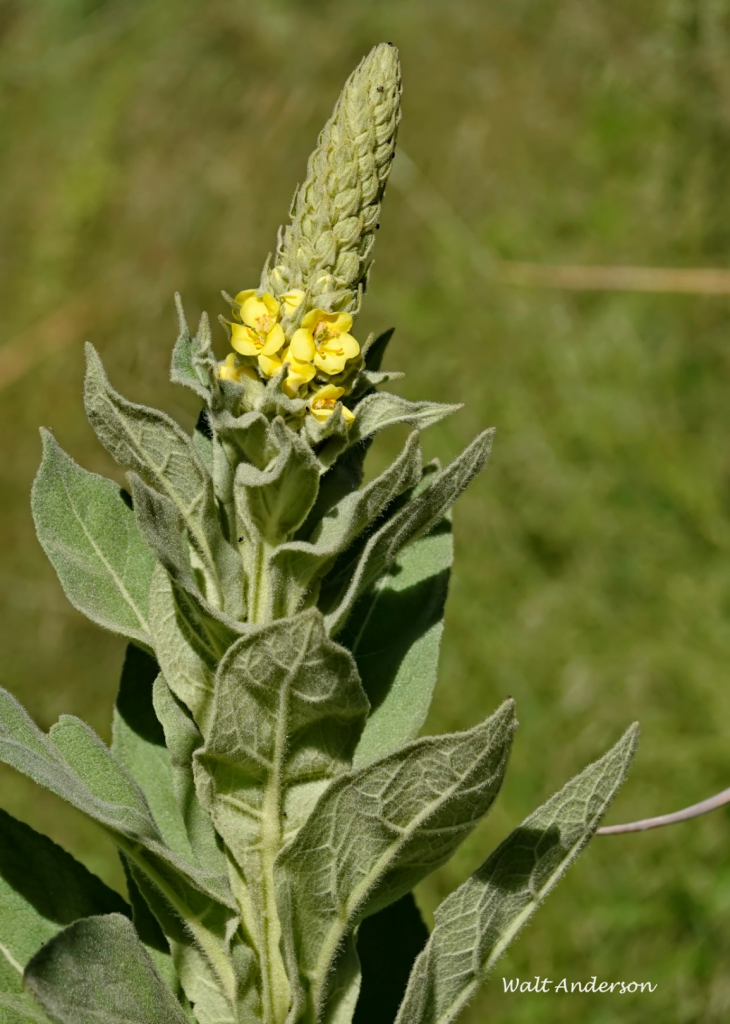
A mullein produces a long, spikelike raceme, where flowers begin to bloom at the base and then mature progressively upward as the lower ones set seed. The flowers are an evolutionary marvel, designed to take pollen from the back of an attending bee, which then triggers four hairy stamens to pop out and dust that bee with new pollen, thus promoting cross-pollination as the bee moves on. If pollinators are scarce, however, the flower at the end of a “disappointing” day will self-fertilize, though seed set tends to be lower. Delayed selfing is a backup generator for when the pollinator lines are down.

The Woolly Mullein’s cousin, Moth Mullein, has also become established in North America. It’s a lovely biennial in its own right. Weed-control folks, those predisposed to hate immigrants, have tried various herbicides, as well as mechanical removal, and some have tried biological control using, ironically, a Mullein Moth.

Though the “normal” inflorescence is spikelike, you sometimes see bizarre shapes like this. Something (e.g., weevils or bacteria or fungi or perhaps genetic abnormalities) reduces the apical dominance of the upper bud and you get this fanlike “fasciation,” very much like the crested or cristate form of a Saguaro. You may also see this type of growth on a Poison Oak, a sagebrush, a mugwort, or an evening primrose.
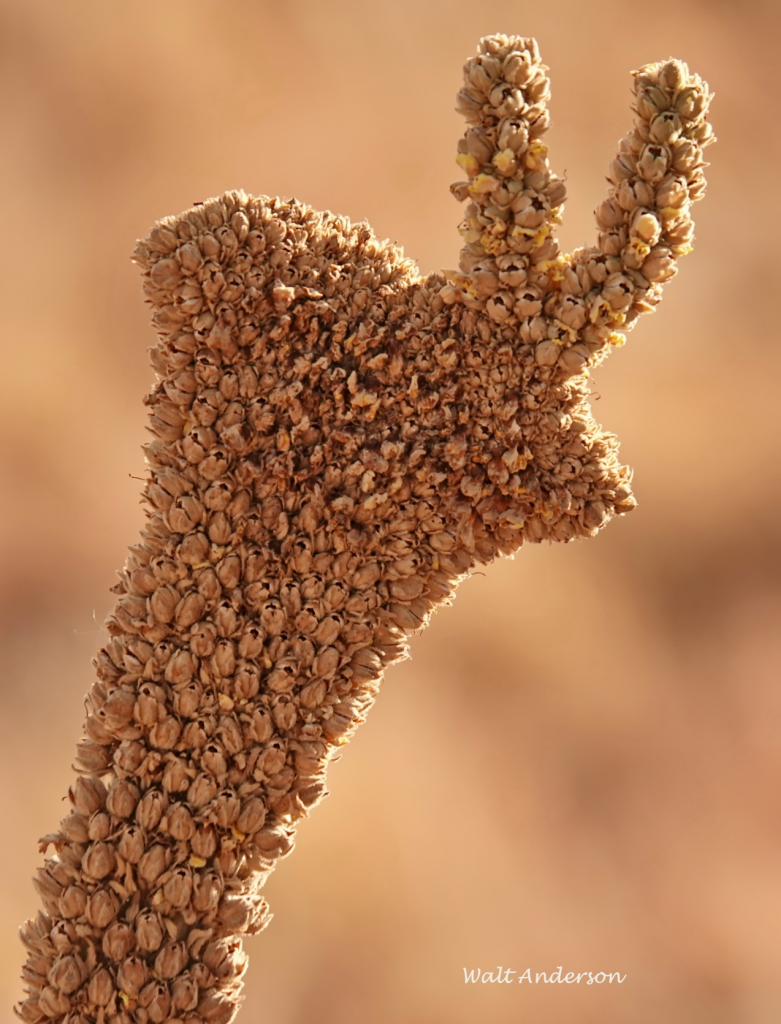
This is an especially fascinating fasciation, crested with an added victory or peace sign. You can see the many septicidal capsules, each with a couple hundred seeds. A mature plant can have as many as 200,000 seeds, and the seeds can lie dormant for dozens, even hundreds of years. There is a record in Denmark in archaeological soil dated from 1300 AD where mullein seeds actually germinated! These are true time capsules.
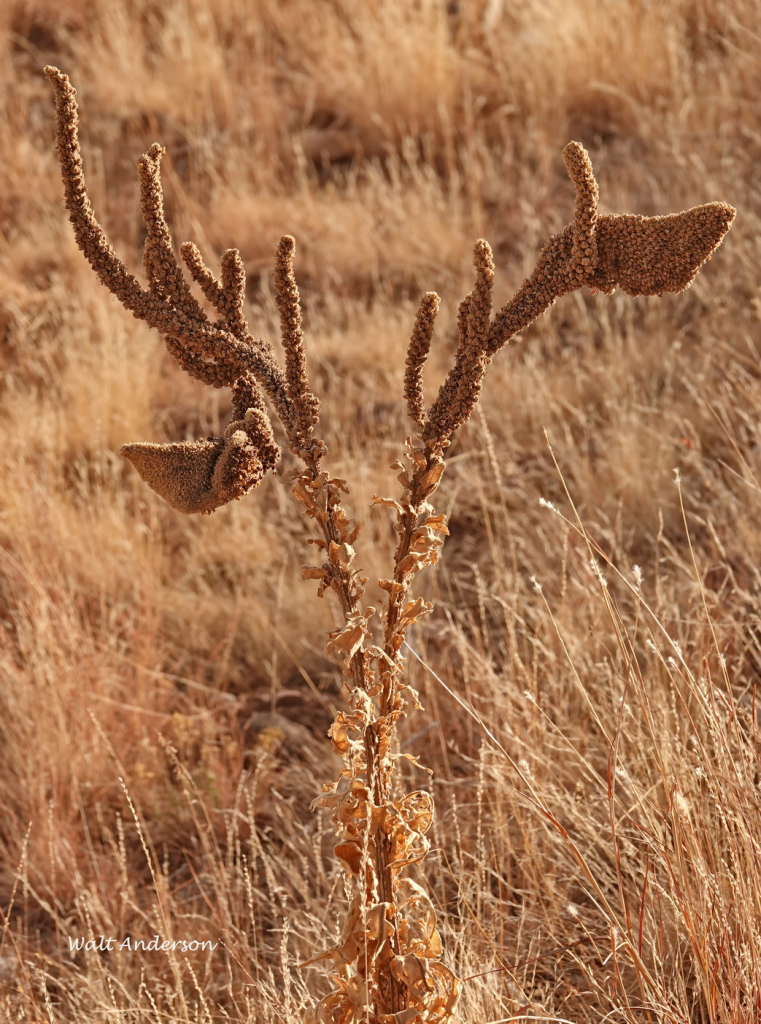
Mulleins that branch like this can have far more seeds than the standard straight wand. Finches, chickadees, bluebirds, and tanagers may hang on the plants to extract seeds. Chipmunks, ground squirrels, and mice will eat the seeds. Uneaten seeds are scattered near the parent plant; long-distance seed dispersal is rare (except when kids take dried stalks home to batter their siblings or peers with mullein swords or clubs).
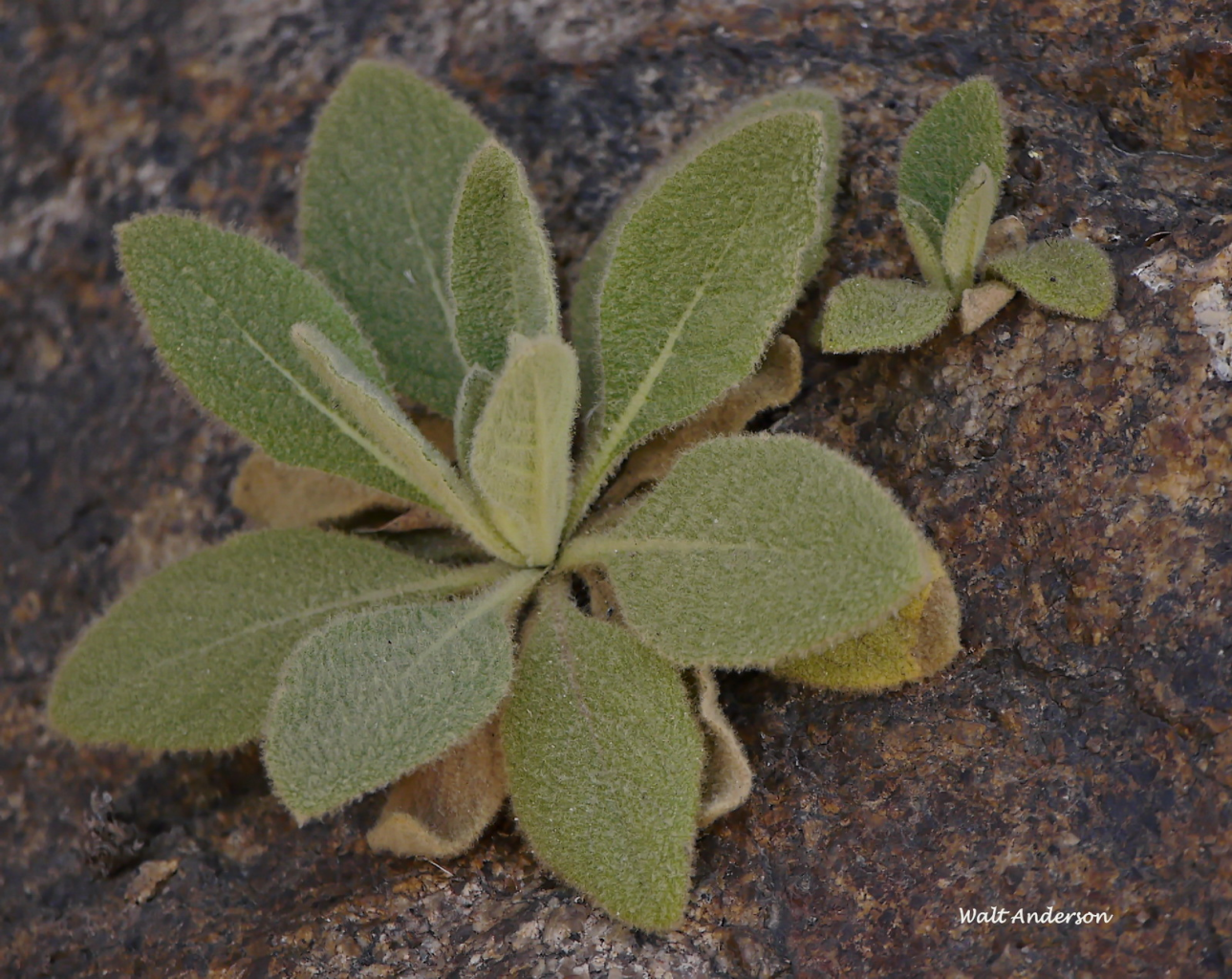
Location, location, location. Germinating on bare granite is not a recipe for future reproductive success. The larger the first-year rosette, the more likely a tall stalk will develop, thereby giving that plant an edge in the breeding sweepstakes. I’m not betting on these two!
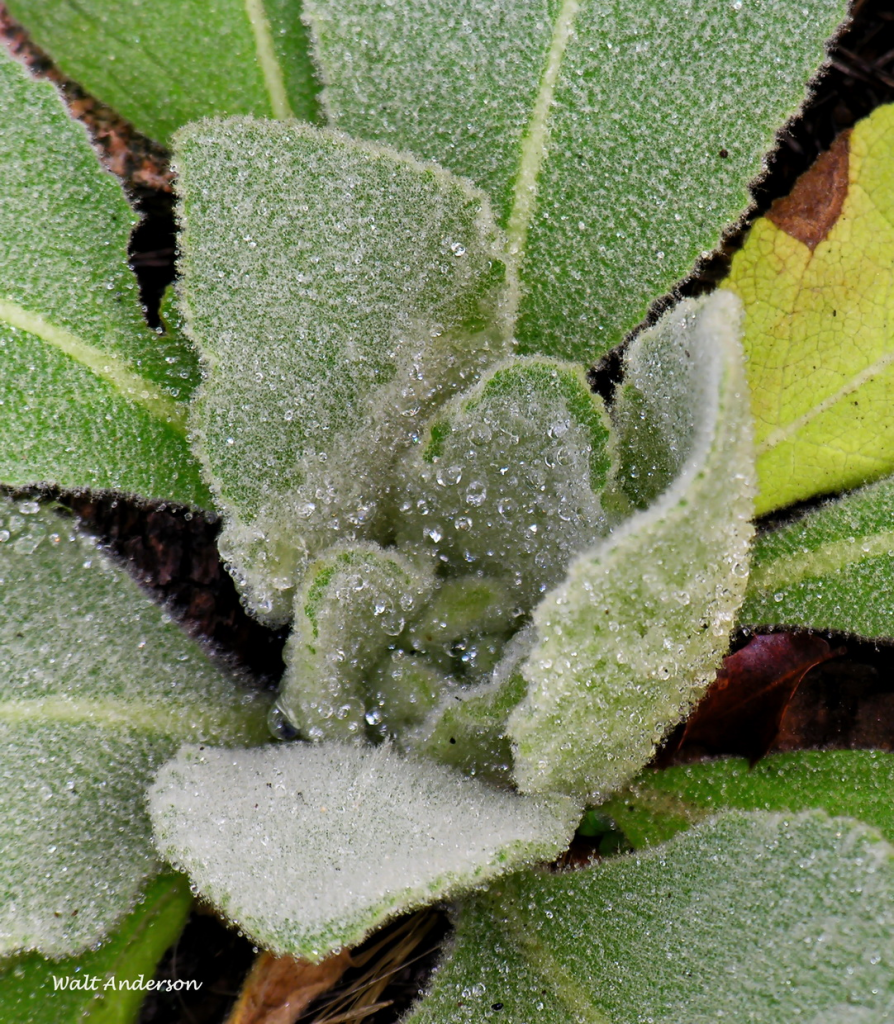
Mullein leaves are “woolly tomentose,” an adaptation that protects the leaves from damaging UV rays and frost, reduces evapotranspiration, and inhibits browsing by insects, slugs, rabbits, and cattle. In the West, mullein leaves can be utilized to some extent by hungry elk, deer, and mountain goats in the winter. The leaves do resemble felt (perhaps you have felt them), and various common names reflect that visual impression (e.g., Beggar’s Blanket, Poor Man’s Blanket, Old Man’s Flannel). At youth camps, kids are often told that they are Indian Toilet Paper (pretty silly for a non-native plant) or Cowboy’s Toilet Paper.
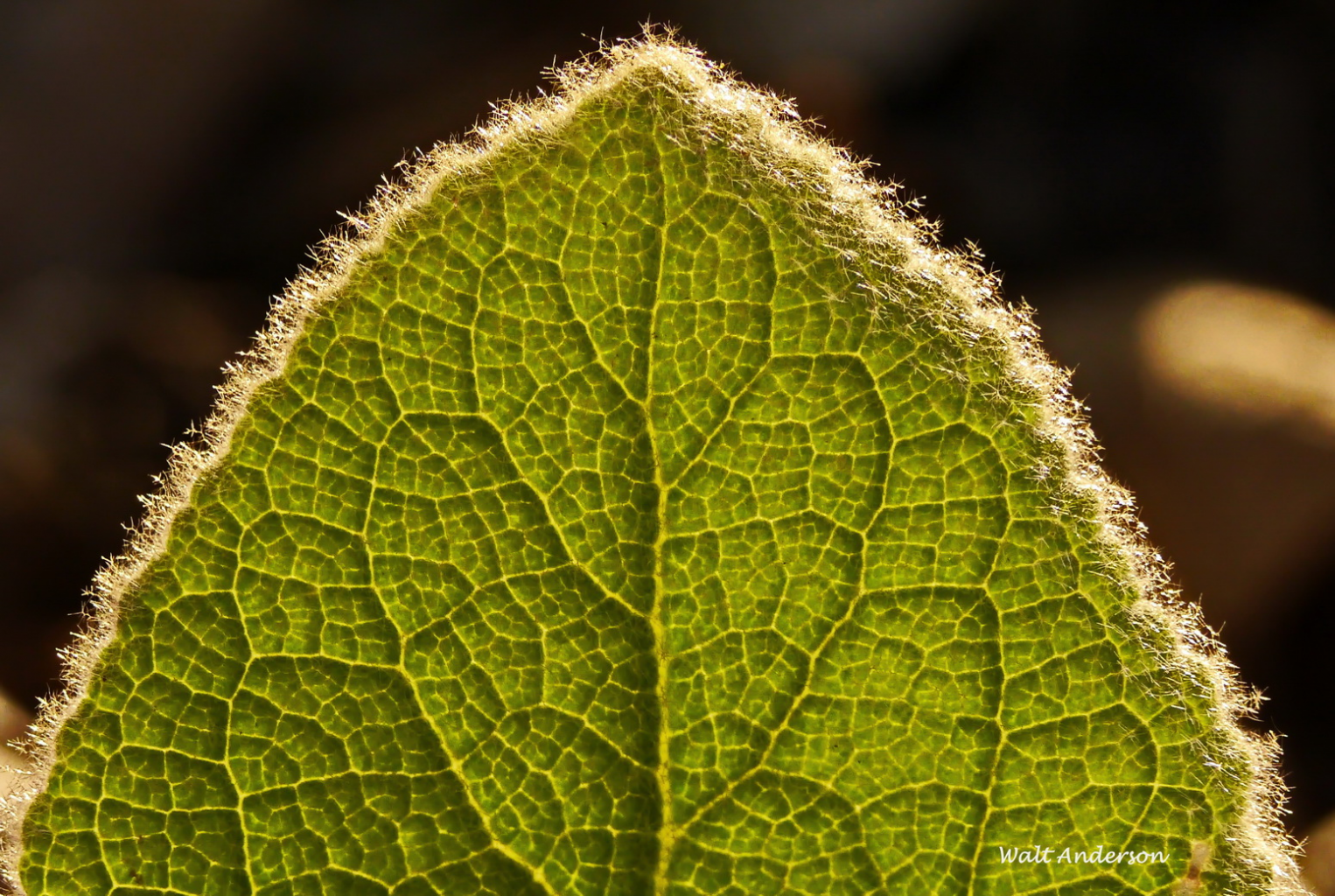
Those poor, misinformed kids! The hairs are stellate; that is, they have star-like projections on their tips that are sharp and can cause contact dermatitis if used on sensitive parts. Don’t say I didn’t warn you! Also, if you brew a tea from the leaves, by all means strain the hairs out before drinking.
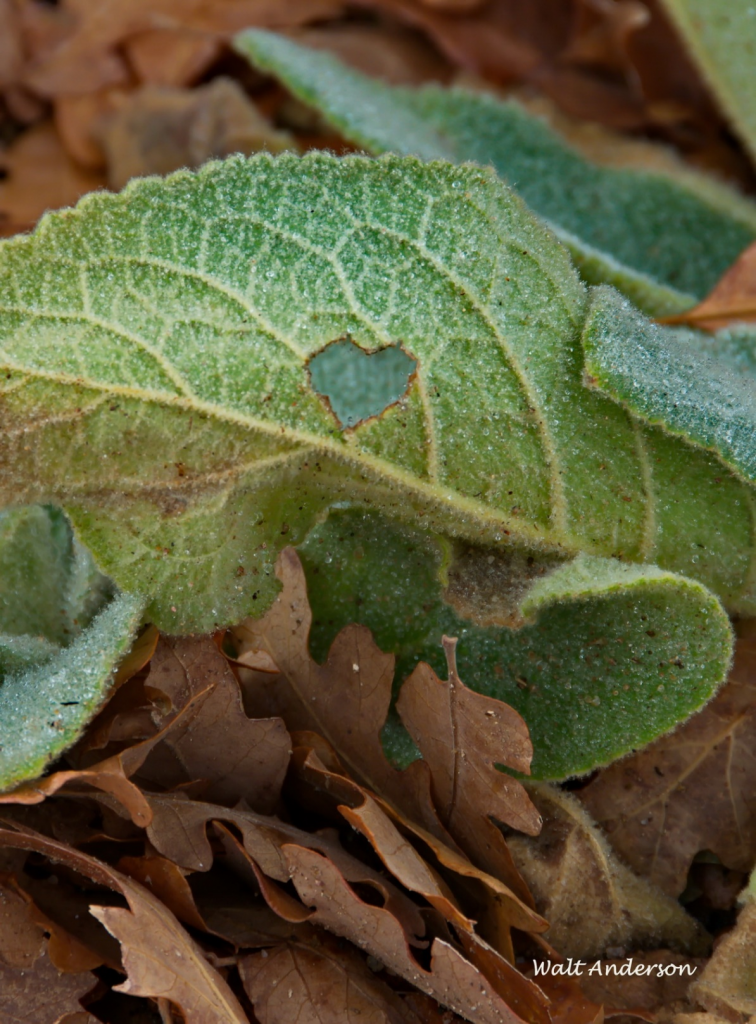
In sum, I urge you not to demonize this carpetbagger. It simply responds to the many land abuses we practice and is a reflection on our habits. It has many medicinal uses (though remember that one of its chemicals is rotenone, which is not particularly good for you, especially if you are fishy in any way). I find it aesthetically pleasing, and for that alone, I give it my heartfelt thanks.
